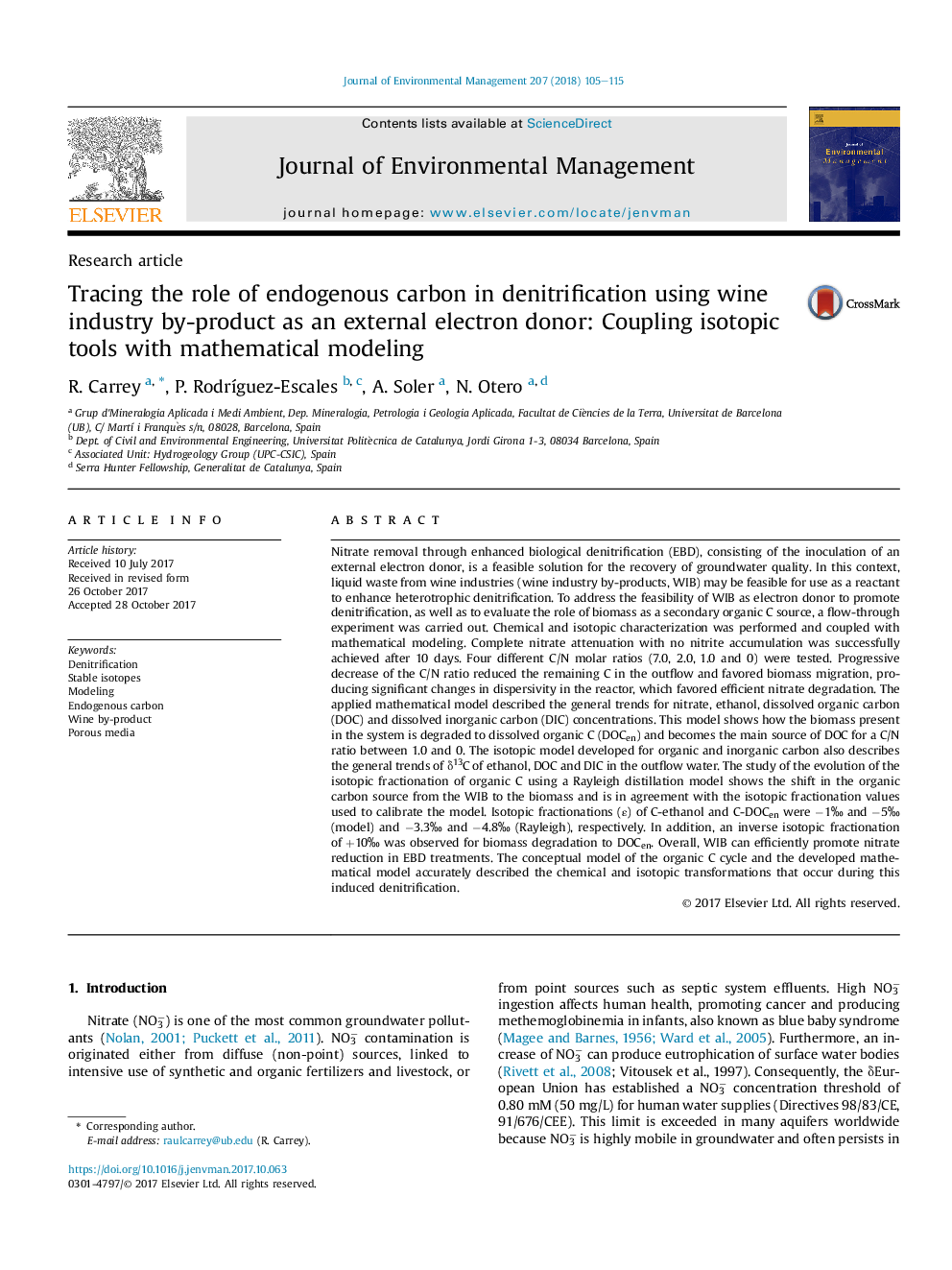| کد مقاله | کد نشریه | سال انتشار | مقاله انگلیسی | نسخه تمام متن |
|---|---|---|---|---|
| 7478397 | 1485211 | 2018 | 11 صفحه PDF | دانلود رایگان |
عنوان انگلیسی مقاله ISI
Tracing the role of endogenous carbon in denitrification using wine industry by-product as an external electron donor: Coupling isotopic tools with mathematical modeling
ترجمه فارسی عنوان
ردیابی نقش کربن اندوژن در تلقیح با استفاده از محصول جانبی شراب به عنوان یک اهدا کننده الکترون خارجی: ابزار ایزوتوپی اتصال با مدل سازی ریاضی
دانلود مقاله + سفارش ترجمه
دانلود مقاله ISI انگلیسی
رایگان برای ایرانیان
کلمات کلیدی
موضوعات مرتبط
مهندسی و علوم پایه
مهندسی انرژی
انرژی های تجدید پذیر، توسعه پایدار و محیط زیست
چکیده انگلیسی
Nitrate removal through enhanced biological denitrification (EBD), consisting of the inoculation of an external electron donor, is a feasible solution for the recovery of groundwater quality. In this context, liquid waste from wine industries (wine industry by-products, WIB) may be feasible for use as a reactant to enhance heterotrophic denitrification. To address the feasibility of WIB as electron donor to promote denitrification, as well as to evaluate the role of biomass as a secondary organic C source, a flow-through experiment was carried out. Chemical and isotopic characterization was performed and coupled with mathematical modeling. Complete nitrate attenuation with no nitrite accumulation was successfully achieved after 10 days. Four different C/N molar ratios (7.0, 2.0, 1.0 and 0) were tested. Progressive decrease of the C/N ratio reduced the remaining C in the outflow and favored biomass migration, producing significant changes in dispersivity in the reactor, which favored efficient nitrate degradation. The applied mathematical model described the general trends for nitrate, ethanol, dissolved organic carbon (DOC) and dissolved inorganic carbon (DIC) concentrations. This model shows how the biomass present in the system is degraded to dissolved organic C (DOCen) and becomes the main source of DOC for a C/N ratio between 1.0 and 0. The isotopic model developed for organic and inorganic carbon also describes the general trends of δ13C of ethanol, DOC and DIC in the outflow water. The study of the evolution of the isotopic fractionation of organic C using a Rayleigh distillation model shows the shift in the organic carbon source from the WIB to the biomass and is in agreement with the isotopic fractionation values used to calibrate the model. Isotopic fractionations (ε) of C-ethanol and C-DOCen were â1â° and â5â° (model) and â3.3â° and â4.8â° (Rayleigh), respectively. In addition, an inverse isotopic fractionation of +10â° was observed for biomass degradation to DOCen. Overall, WIB can efficiently promote nitrate reduction in EBD treatments. The conceptual model of the organic C cycle and the developed mathematical model accurately described the chemical and isotopic transformations that occur during this induced denitrification.
ناشر
Database: Elsevier - ScienceDirect (ساینس دایرکت)
Journal: Journal of Environmental Management - Volume 207, 1 February 2018, Pages 105-115
Journal: Journal of Environmental Management - Volume 207, 1 February 2018, Pages 105-115
نویسندگان
R. Carrey, P. RodrÃguez-Escales, A. Soler, N. Otero,
